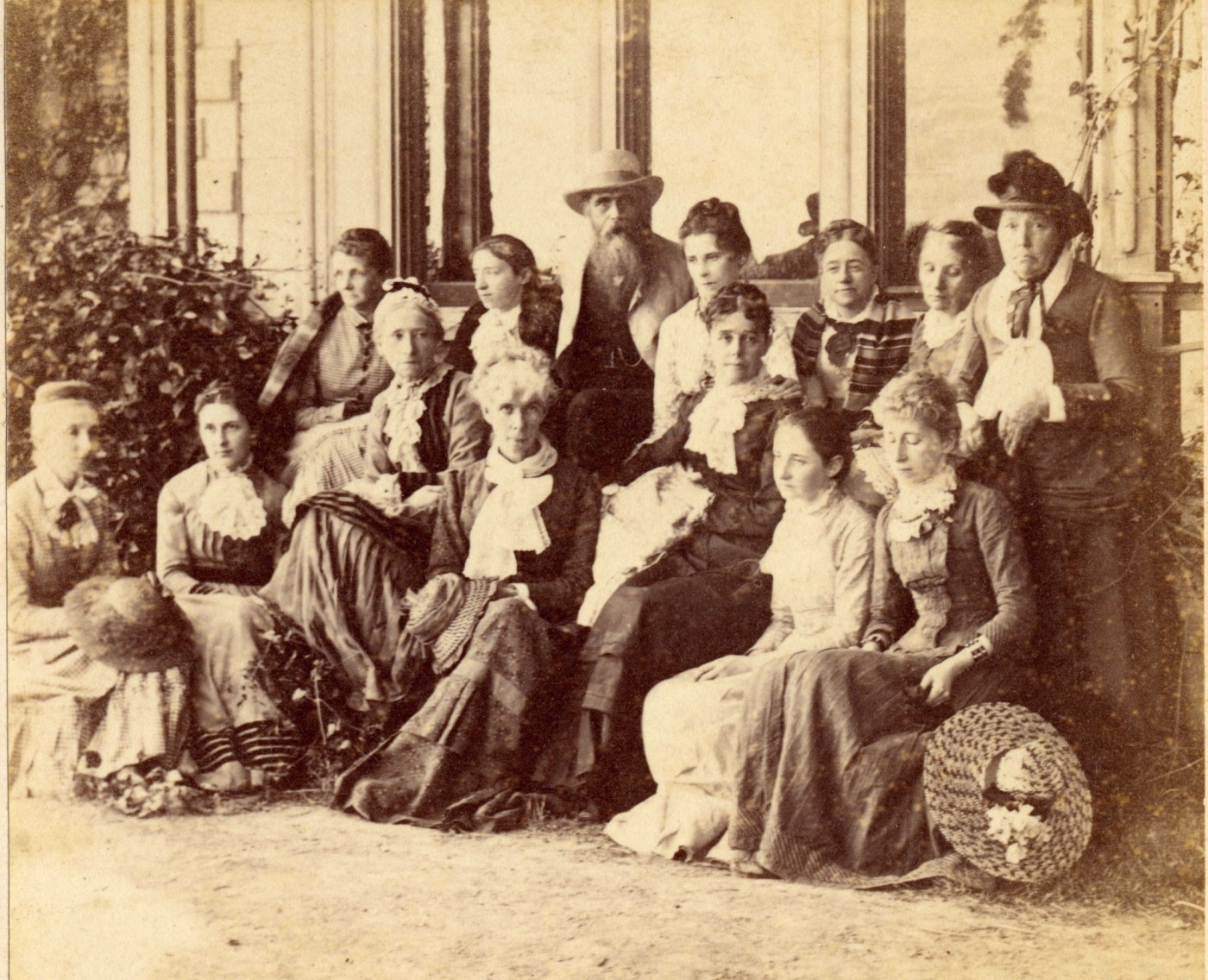Decades before Charles Manson’s followers spread terror in Los Angeles and Jim Jones orchestrated mass suicide in Guyana, a bearded mystic named Thomas Lake Harris preached salvation in the hills above Santa Rosa.
Related Articles
Today in History: September 16, massacre in Sabra and Shatila refugee camps
You might be surprised by how the term Uncle Sam came to be
Today in History: September 15, Lehman Brothers files for bankruptcy
Today in History: September 14, Monaco princess dies of car crash injuries
Opera San Jose looking to shake things up for its 42nd season
He claimed to speak with spirits, rewrote the Bible and battled demons in trances. His followers gave him their money — sometimes a great deal more. What began as a utopian experiment called Fountaingrove ended in scandal and headlines about “spiritual harems” and mind control.
In a new book, “Unholy Sensations: A Story of Sex, Scandal and California’s First Cult Scare” (Oxford University Press, 2025), historian Joshua Paddison revisits Harris’ rise and fall. It is a sensational tale of faith, fraud and forbidden desire that captivated 19th-century America, with themes that still resonate today.
From England to Sonoma County
Paddison, a history instructor at Texas State University, situates Harris within the context of a 19th-century spiritual awakening, an era marked by a search for meaning beyond the industrial age, during which utopian communities emerged across the country.
Born in 1823 in the village of Fenny Stratford, Buckinghamshire, England, Harris came to the United States when he was five years old. His solidly middle-class family settled in Utica, New York, where his father was a grocer and devout Calvinistic Baptist. His mother died when he was nine.
Harris said he experienced an “overflowing” love of Christ at 15, when he attended a revival meeting. He began his public life as a Unitarian minister in New York around 1845. But his path soon veered into the realm of spiritualism. Claiming the ability to serve as a medium, he drew inspiration from the teachings of the Swedish mystic Emanuel Swedenborg, whose writings sparked a lifelong fascination with the spirit world.
Harris spent four years in Britain, where he founded the Brotherhood of the New Life, a utopian group dedicated to spiritual purity, manual labor and retreat from what they viewed as the corrupting forces of urban society.
During the Civil War, Harris returned to the United States, where he established three colonies in New York. A decade later, he felt moved by the spirits to relocate once again; this time, 2,600 miles west to Sonoma County.
A vision of Santa Rosa
Led by visions and attracted by cheap land and a mild climate, Harris and a few trusting acolytes took the railroad to Santa Rosa, then a town of about 3,000, in 1875. They bought a tract of land at the northern end of town to build “a fine residence in the style of an English Park” and named the colony Fountaingrove in a nod to the springs and streams on the property.
With his flowing beard and magnetic presence, Harris embodied the modern cult leader. At Fountaingrove, he taught “divine respiration,” a breathing method he claimed allowed contact with spirits, angels and demons. He said his revelations came from Jesus, and rewrote parts of the Bible accordingly.
Harris believed that each person had an opposite soul, often the spirit of the dead, which was accessible through trance. His counterpart, Lily Queen, was a celestial being with whom he claimed a spiritual union, depicted in an erotic manner in his poetry.
For over 15 years, Harris and about 30 followers lived quietly at Fountaingrove, which grew into a 2,000-acre colony in the hills north of Santa Rosa.
The commune initially sustained itself through dairy and poultry farming. Later, it planted vineyards and built a winery that exported Burgundies, Clarets and sparkling wines across the U.S. and abroad, helping to build Sonoma County’s reputation for world-class wines.
Then came the scandal.
“A den of sensuality”
In 1891, Alzire Chevaillier — a suffragist, reformer and former admirer of Harris — launched a public crusade against him. Once a guest at Fountaingrove, she turned on Harris and accused him of exploiting followers through occult manipulation, claiming he used hypnotic powers to extract money and sexual favors.
In contrast to Harris’ professed celibacy, Chevaillier alleged he presided over a “den of sensuality.” She said he commanded men and women to bathe together and practice “free love,” luring unsuspecting women into his so-called “spiritual harem.”
Chevallier claimed to have affidavits supporting her allegations, though they were never made public. She delivered scathing lectures in San Francisco and at the Athenaeum opera house in Santa Rosa.
News coverage soon exploded with lurid details: forced marriages, secret abortions, voyeurism and intergenerational sex – all fodder for the rising era of yellow journalism.
“No one on two continents is more talked of by mouth and pen than Thomas Lake Harris,” one writer for The Boston Globe remarked.
The Sonoma Democrat (now The Press Democrat), along with local merchants and bankers — some of whom were fellow Knights Templar — defended Harris. Editor Thomas Larkin Thompson argued that Fountaingrove’s economic contributions to the city outweighed concerns about its private affairs.
Still, the national press had a field day.
Unanswered questions
Were the sex accusations true? That remains, in Paddison’s words, “excruciatingly difficult to answer, even for historians with access to primary sources that newspaper readers in the 1890s lacked.”
Paddison spent over a decade researching Harris, examining thousands of primary documents and newspaper archives. He shows how Harris’ story helped define the very term “cult,” a word, he notes, that is often weaponized to marginalize groups seen as threatening or strange.
“I think Harris was a devout believer that he was a prophet,” Paddison said in an interview. “I think he absolutely believed everything he was teaching.”
Still, like many charismatic leaders, Harris misused his power for personal gain, lied and issued threats when his authority was challenged.
While Paddison believes authoritarian, abusive and violent cults should be denounced, he argues that no religion or spiritual group should be dismissed outright as a “cult.”
“When we label a group a cult,” he said, “it’s always used against groups that we don’t like.” And that perception can change over time.
According to Paddison, cults continue to fascinate because they evoke controversial topics, such as power, faith and sex, that provoke strong emotional responses.
Forgotten legacy
Under a ceaseless barrage of negative media reports, Harris left Santa Rosa in February 1892 after a hastily convened marriage to a longtime companion and disciple. He evaded the press for years, traveling through Florida, Canada and Britain, before dying in a luxurious New York City apartment in 1906 at age 82.
But his influence lingered. One of the most complex chapters in his legacy involves Kanaye Nagasawa, a Japanese immigrant from a samurai family and Harris’ informally adopted son.
Known as the “Baron of Fountaingrove,” Nagasawa took over the estate and hosted dignitaries, including Jack London, Thomas Edison and Luther Burbank. In 1899, he constructed a large, round barn to house the vineyard’s horses. It remained a prominent landmark until it burned in the 2017 Tubbs Fire.
However, when Nagasawa attempted to pass the land to his heirs, state laws prohibiting Japanese residents from owning property hindered the transfer. The family lost the estate.
Though Nagasawa now has a city park named in his honor, Paddison argues that racism played a central role in eroding his legacy.
Today, most Santa Rosans are unaware of Harris or the scandal that once made the town notorious. Some streets, businesses and a country club keep the Fountaingrove name, but the story is mostly forgotten.
Paddison credits The Press Democrat columnist Gaye LeBaron with preserving the history in her writings, including her 2019 book “The Wonder Seekers of Fountaingrove.” Still, he says, the darker chapters, including sexual coercion, media hysteria and racial injustice, are often overlooked. His book not only revives a long-buried story but also explores how the Harris saga reflected the moral, religious and cultural anxieties of its era.
Even now, Paddison concludes, cult stories endure because they force us to confront uncomfortable truths — not only about those who lead or join them but about the societies that create them.
Clark Mason can be reached at [email protected].





